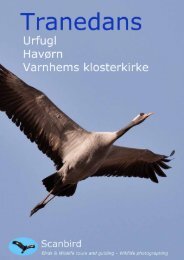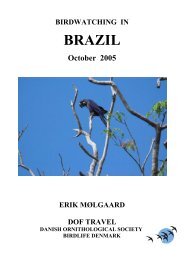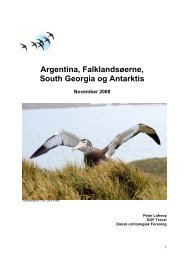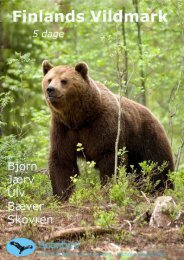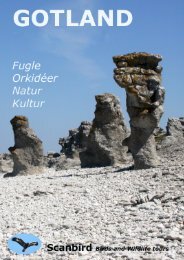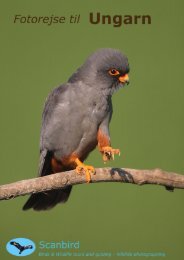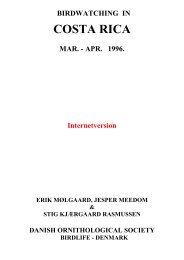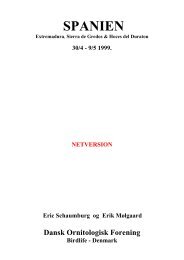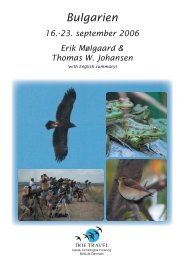Birding Southern Sweden (large PDF file (5 MB) - Tåkerns Fältstation
Birding Southern Sweden (large PDF file (5 MB) - Tåkerns Fältstation
Birding Southern Sweden (large PDF file (5 MB) - Tåkerns Fältstation
Create successful ePaper yourself
Turn your PDF publications into a flip-book with our unique Google optimized e-Paper software.
Birdwatching in <strong>Southern</strong> <strong>Sweden</strong><br />
<strong>Southern</strong> <strong>Sweden</strong> has a lot to offer to those who are interested in<br />
nature and especially birds. Within an hour you can move from<br />
bustling coastal areas with sea species to desolate mires with a <strong>large</strong><br />
influx of northern birds or to <strong>large</strong> bird lakes with a very rich variety<br />
of bird species. In the southern areas there are also magnificent rich<br />
deciduous woodlands of continental character and in the east there<br />
are the striking bare limestone soils areas of Öland. There are few<br />
other areas in Europe that can offer such a variety of habitats or<br />
such a rich and varied collection of birds.<br />
<strong>Sweden</strong> is distinguished from many countries in Europe in being<br />
so sparsely populated. You are often near to wild country. Furthermore,<br />
in principle we have free access to the countryside. With responsibility,<br />
and care of cultivated land, we have right to roam free<br />
over the countryside. Such freedom is not available in many European<br />
countries.<br />
<strong>Southern</strong> <strong>Sweden</strong> is an important migratory path in spring and<br />
autumn. The impressive bird of prey migration over Falsterbo is<br />
known as one of Europe’s best. Less well known is the spring and<br />
autumn seabird migration that follows the southern coast of the<br />
Scandinavian peninsula or the passerine migration that can be seen<br />
on autumn days. Well known over Europe is the mass gathering of<br />
Cranes at Lake Hornborga in April. Considerably less well known is<br />
e.g. the huge Red-throated Diver flocks at the Bay of Laholm in May<br />
or the gathering of waders on Öland in late summer.<br />
A travelling bird watcher cannot experience birds alone. In southern<br />
<strong>Sweden</strong> there are many hostels, cottages to let and campsites,<br />
and hotels and guesthouses in all standards of price. For those camping<br />
or using a campervan/caravan, you can camp, responsibly, overnight<br />
in a <strong>large</strong> part of southern <strong>Sweden</strong> for free.<br />
Nowadays it is quite cheap both to stay in and to get to <strong>Sweden</strong><br />
from the British Isles.<br />
Last but not least, information about birding is well developed in<br />
southern <strong>Sweden</strong>. Most regions have their own telephone information<br />
service that is updated at least once a day. If you have access to<br />
the Internet you can follow what is happening on the birding front<br />
via many different web sites (see page 23).<br />
Anders Wirdheim,<br />
Editor, Swedish Ornithological Society<br />
3



